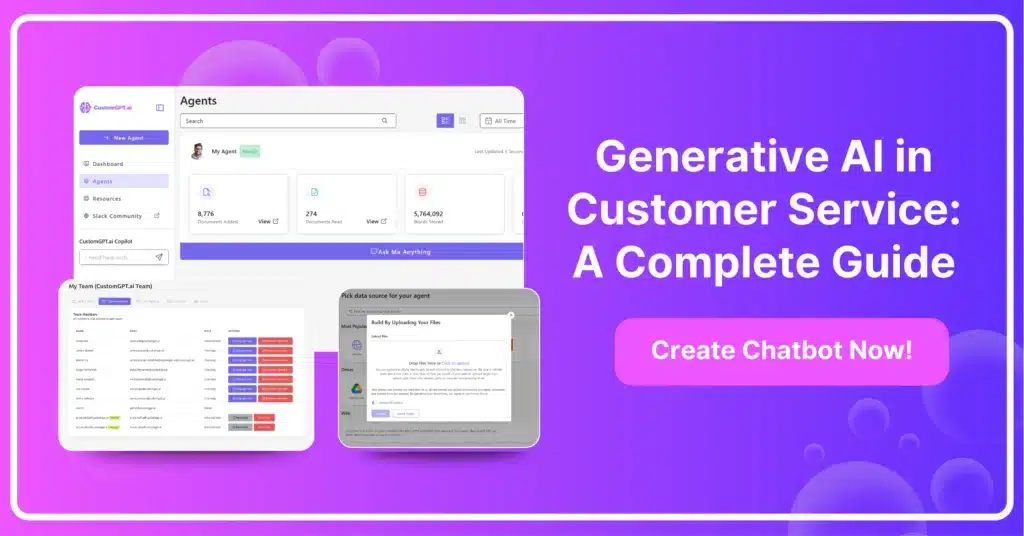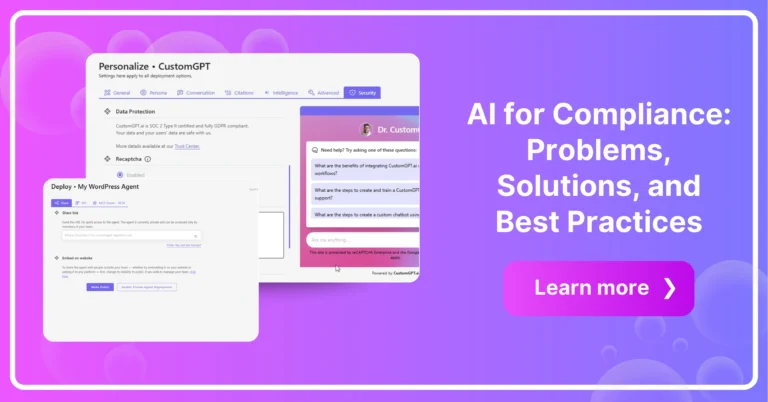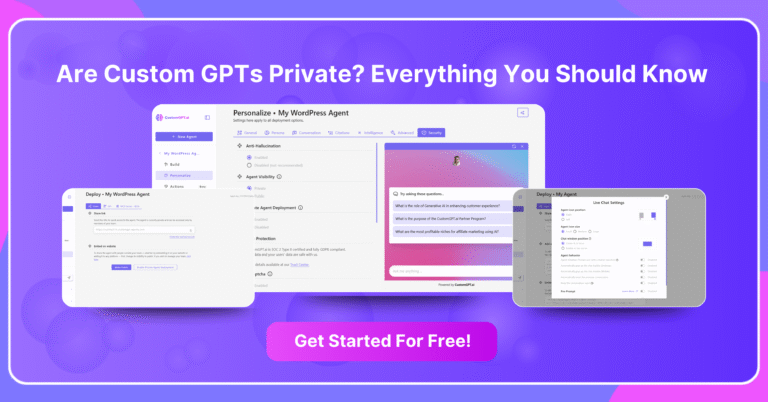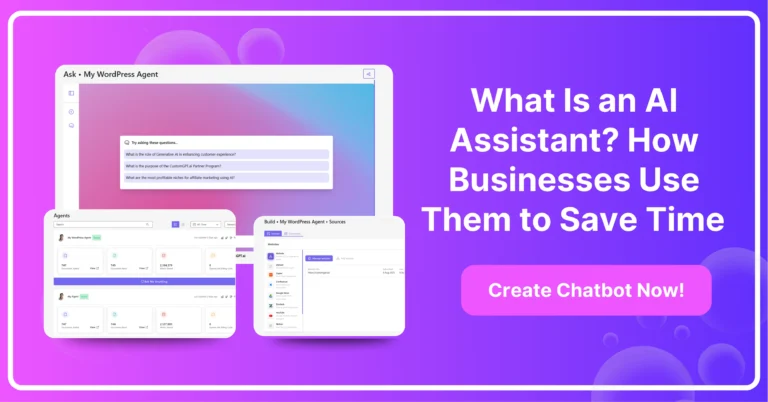What if your customer service could anticipate questions before they’re even asked, proffer solutions with human-like empathy, and learn from every interaction?
Generative AI makes this vision a reality—turning routine support into a source of competitive advantage.

In this guide, we’ll walk you through how next-gen AI is reshaping customer experience, efficiency, and loyalty.
Defining Generative AI and Its Capabilities
Generative AI leverages transformer architectures (e.g., GPT-4) to synthesize dynamic responses by interpreting intent, sentiment and context. Its strengths include:
- Real-time, coherent response generation
- Context awareness via semantic embeddings
- Scalability across channels
Challenges include potential “hallucinations” (plausible but incorrect outputs) and the need for continuous monitoring and fine-tuning.
Generative vs. Traditional AI
Traditional AI uses decision trees and predefined scripts—effective for repetitive tasks but brittle for novel queries. Generative AI composes replies on the fly, adapting to context and feedback.
| Aspect | Traditional AI | Generative AI |
| Response Generation | Pre-written templates | Contextual synthesis |
| Adaptability | Fixed logic paths | Learns from context and data |
| Handling Novel Queries | Limited | Flexible, though may hallucinate |
| Maintenance Overhead | Low, but inflexible | Higher, due to retraining needs |
Banks adopting generative AI have reported double-digit improvements in first-contact resolution within a few months of rollout.
Integration with Customer Service Platforms
Seamless API integration connects AI to CRMs and helpdesk systems.
For example, A recent study on the integration of Salesforce Einstein AI within CRM workflows showed a 22% improvement in response relevance and a 17% reduction in average handling time (read the research).
Key steps:
- Data Orchestration: Ensure AI accesses accurate, current records across systems.
- Escalation Flows: Route complex issues to human agents.
- Agent Augmentation: Use AI to draft responses, freeing agents for high-value tasks.
Generative AI complements rather than replaces agents, automating routine work while humans focus on exceptions.

Workflow Automation and Efficiency Gains
Generative AI automates context-aware tasks—ticket triage, response drafting, even follow-up scheduling. Key mechanisms:
- Intent Recognition routes queries accurately.
- Dynamic Updates synchronize CRM and knowledge bases in real time.
A global e-commerce platform automated 70% of FAQs within six months, reducing resolution times by 30%. Robust data pipelines and monitoring are vital to prevent inconsistencies.
Enhancing Human Agents with AI Support
As a “second brain,” AI provides next-best-action suggestions by analyzing live chat context, customer history and sentiment. Success depends on calibrated feedback loops: agents must confirm or override suggestions to refine the model and maintain trust.
Zendesk’s tools, for instance, offer real-time recommendations that improve agent efficiency and satisfaction.
Personalizing Customer Interactions with AI
Generative AI drives hyper-personalization by embedding customer data into high-dimensional representations. These systems adapt replies based on purchase history, preferences and sentiment:
- Contextual Embedding maps inputs to nuanced semantic spaces.
- Proactive Outreach can suggest products or support before customers ask.
Companies leading in personalization see up to 40% more revenue growth. Critical to success is maintaining up-to-date, domain-specific training data to avoid stale or generic interactions.
Tailored Customer Experiences with RAG
Retrieval-Augmented Generation (RAG) enhances conversational AI by fetching relevant documents, data points or knowledge snippets in real time and weaving them into generated responses. By integrating live data feeds—such as inventory status, user profiles and recent transactions—with a pre-trained language model, RAG systems deliver:
- Accurate, up-to-date answers: Live lookups ensure the AI never relies solely on static model parameters.
- Improved context awareness: Combining external data with neural generation creates richer, more personalized interactions.
- Scalable knowledge management: New information sources can be added without retraining the core model.
Implementation Considerations
- Data pipeline design: Establish low-latency connectors to internal databases, document stores or third-party APIs.
- Indexing strategy: Use vector stores for efficient similarity search and retrieval.
- Fallback mechanisms: Define rules for graceful degradation if external data is unavailable, ensuring the AI can still respond coherently.
By architecting RAG with synchronized data streams and robust retrieval layers, organizations can create AI-driven support that feels both intelligent and grounded in real-world information.
Real-Time Support and Predictive Analytics
Moving beyond reactive ticketing, predictive analytics leverages live data streams to anticipate customer needs and prevent issues before they escalate. Key capabilities include:
- Anomaly Detection: Identify surges in support tickets or service metrics in real time.
- Automated Workflows: Trigger actions such as ticket triage, specialist alerts, or system checks based on predefined rules.
- Predictive Maintenance: Forecast potential service disruptions to enable preemptive resolution.
- Feedback Integration: Continuously refine models using agent and customer feedback loops.
Telecommunications firms using real-time network analytics report mid-teens percentage improvements in service uptime and customer satisfaction.
Technical Aspects of Generative AI Implementation
Implementing generative AI successfully hinges on a few core technical pillars:
- Data Orchestration: Synchronize AI with CRMs (Salesforce, HubSpot) for a unified customer view.
- Model Fine-Tuning: Train on proprietary datasets to improve relevance and reduce hallucinations.
- Privacy-Preserving AI: Employ differential privacy and encryption to secure sensitive data.

NLP and CRM Integration
Bidirectional pipelines link NLP engines to CRMs, enabling:
- Real-time context pulls (e.g., past orders, unresolved tickets)
- Automated record updates based on chat outcomes
Data normalization and low-latency APIs are critical: one retailer saw a 15% jump in first-contact resolution after optimizing their preprocessing and API layers.
Ensuring Data Security and Privacy
- Differential Privacy: Adds noise to datasets, thwarting re-identification.
- Role-Based Access Control: Limits data access by role; financial institutions report 40% fewer unauthorized incidents after implementation.
- Encrypted Pipelines: Use optimized algorithms to secure data in transit with minimal latency impact.
Ethical Considerations and Challenges
Generative AI introduces risks of bias and opacity:
- Bias Mitigation: Use adversarial debiasing and diverse datasets to prevent discriminatory outcomes.
- Explainability: Integrate XAI frameworks (IBM Fairness 360, Microsoft Fairlearn) for transparent decision paths.
- Access Control: Implement role-based access control and encrypted pipelines to safeguard data.
Human oversight remains essential—particularly for emotionally sensitive cases.
“The strength of AI lies in its ability to learn and adapt, but this must never come at the expense of transparency and fairness.”
— Fei-Fei Li, Professor of Computer Science, Stanford University
Future Trends and Developments in AI-Driven Customer Service
Looking ahead, several cutting-edge developments promise to further elevate AI-powered customer support. Key trends to watch include:
- Multimodal AI by 2027: Gartner’s forecast that 40% of generative AI solutions will be multimodal by 2027 comes from their research note on next-gen AI capabilities .
- Microsoft 365 Copilot impact: The data on Copilot saving UK civil servants 26 minutes per day (15–20% reduction) with 82% adoption comes from a GeekWire report on the UK government trial of Microsoft 365 Copilot .
These advances demand robust data ecosystems to avoid fragmentation.

FAQ
What are the key benefits of using generative AI for customer service, and how does it improve efficiency and personalization?
Generative AI speeds up interactions with real-time, human-like responses; personalizes support using customer history and sentiment analysis; automates routine tasks to reduce operational costs; and scales seamlessly to handle peak volumes without additional headcount.
How does generative AI leverage entity relationships and salience analysis to deliver contextually accurate responses?
Combine domain-specific fine-tuning with Retrieval-Augmented Generation (RAG) to ground outputs in reliable data, implement human-in-the-loop reviews for quality control, and maintain continuous monitoring and automated testing to catch and correct errors early.
What’s required for seamless integration?
You need robust API orchestration that connects AI to CRMs, ticketing and knowledge bases; real-time data pipelines to ensure up-to-date customer context; and well-defined escalation and feedback protocols so complex cases route to human agents and improve the AI over time.
How can AI remain ethical and compliant?
Adopt diverse, representative training datasets and adversarial debiasing techniques; use explainable AI frameworks (e.g., IBM Fairness 360, Microsoft Fairlearn) for transparency; enforce role-based access control and end-to-end encryption for data security; and preserve human oversight for sensitive or high-stakes interactions.
Conclusion
Generative AI represents a transformative opportunity to elevate customer service from a cost center into a strategic advantage. By harnessing advanced NLP, real-time analytics and human-in-the-loop validation, businesses can deliver faster, more personalized support that builds trust and loyalty.
Call to Action
Ready to revolutionize your customer experience with generative AI? Sign up now to get started!





